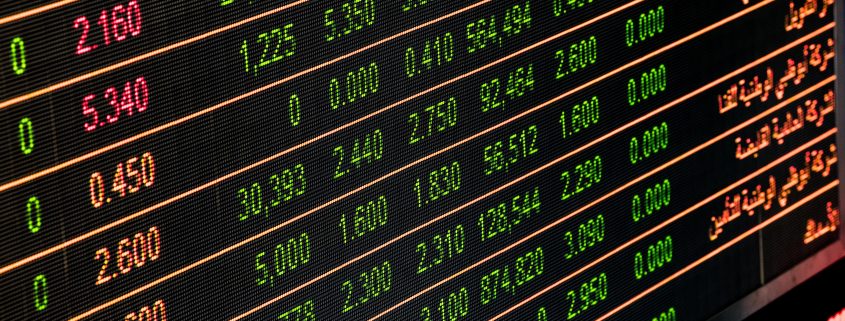U.S. bank collapses and the impact on the property market for foreigners.
There’s been quite a bit happening in the last week in the U.S. financial markets with the 2nd largest banking collapse in the history of the U.S. – Silicon Valley Bank (SVB).
With around USD212 billion in assets and funds, SVB was the 16th largest bank in the States. As their name suggests, Silicon Valley Bank specifically targeted tech start-ups and the venture capital investors and firms that support these.
What happened with Silicon Valley Bank?
Silicon Valley Bank (SVB) was essential a bank targeting tech start-ups, and the venture capital investors that fund them. The pandemic and particularly post pandemic period has been very tough on a lot of tech companies (particularly new start-ups) and crypto and we have seen both shares in these companies and crypto values plunge in the past 12 – 18 months. This put a large strain on several tech companies who then needed to recall any cash reserves they may have had, and/or the investors invested in these start-ups try to recoup cash to cover expenses.
This left SVB with very low reserves, so the bank then went out to market to attempt to raise capital to boost reserves, which was unsuccessful. This activity has spooked the market somewhat and started to create a ‘bank run’ on the bank.
What is a ‘bank run’?
Essentially a ‘bank run’ is when many customers all try to withdraw their funds within a short period of time. Or, as possible in the case of SVB, even just a few customers withdrawing large amounts can be problematic.
Banks will generally only hold around 10% of deposited capital in liquid reserves, with the rest being lent out or used for investment returns as profits for the bank. This is how banks earn their profits. By paying customers a small amount of interest on their deposit, they then use these funds for investments or loans and earn a higher rate, the difference being their profit margin.
What did the bank do?
With the capital raise unsuccessful, the only option SVB had left, was to sell a large number of 10-year Treasury bonds they had purchased as an investment. For those that are not familiar with bonds, these are essentially IOUs purchased from the government or central bank. They pay you a yield on each bond based on the current interest rate, for the term of the bond – generally 5-10 years, at which point the government buys them back. Essentially lending money to the government for a fixed period at a fixed rate. Generally, a safe investment…. right?
Issue was, the bonds they owned at pandemic interest rate levels of around 2%, are significantly lower than current bonds that can be purchased from the Fed at around 4%+ yields, so they needed to sell early at a greatly reduced price to entice buyers, hence realising a massive loss…
Shareholders and customers got wind of this, and a massive bank run ensued until the U.S. Government stepped in…
What is covered by the U.S. Government?
Small financial institutions in the U.S. are not necessarily covered by government regulations, but most reasonable sized banks that adhere to the federal banking regulations and have a reasonable credit rating, are. The U.S. Government has what is called the Federal Deposit Insurance Commission scheme (FDIC). This guarantees all deposits in any bank with FDIC up to US$250,000 are safe.
What the government has also done is stepped in and said that they’re going to guarantee all funds and Silicon Valley Bank to all their deposits or the clients. Note: this does NOT cover the bank itself, or the shareholders/ bondholders of the bank.
What was the cause?
While the poor performance of tech shares, and crypto values of recent times certainly started the issues SVB had, their large exposure in Treasury bonds also is being looked at. Truthfully, such a large exposure in long term fixed bonds, ‘banking’ on the interest rates to stay low, was certainly a mistake. Whether the bank had sufficient regulations in place to manage and monitor such a risky investment decision is being questioned, but likely all too little too late now.
The underlying current volatility in economic & financial markets globally is certainly putting a strain on the economy and that’s when we can start to see cracks appearing. While I do not believe this is solely the cause for the failure of SVB, the strain of the current economic times has brought to head several questionable decisions made by the bank.
How does this impact the U.S. Residential market?
This has been no impact directly on the US. housing sector. With the bank being predominately a tech industry bank, it’s not likely to have an effect. Most residential mortgages are held with large nationals, which, while not happy with the U.S. government tipping into the banking fund to bail out the bank, are largely unaffected.
One of the things that the U.S. Government or the Federal Reserve Bank may do though, is pause on interest rate rises. There’s a very good chance now that they may let the dust settle first before they look at any additional rises. There was forecasted a rise for March, which I believe is now unlikely. Again, it may even change their entire policy moving forward altogether, although unlikely. A lot will depend on how much impact they see this collapse and the smaller banks also collapsing is having on the financial sector.
Where to from here?
All I can suggest is diversification is probably one of the best things you can do. The adage – “Don’t have all your eggs in one basket” comes to mind. This volatility is impacting global markets and even here in Oz, our housing market, rental market, job market is all affected. Diversification is the best method of hedging against any market volatility.
I will certainly watch this space going forward and let you know any further developments. If diversifying your property portfolio is something you are considering, or even looking at investing in property



